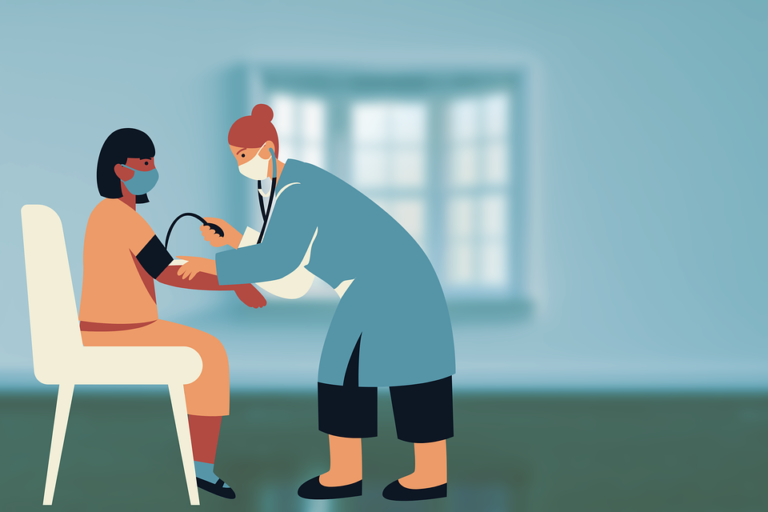Book Appointment Now

The Levine Conservation Model
Developed by Myra Estrin Levine in 1973, the Levine Conservation Model (LCM) offers a structured theoretical framework that emphasizes conserving a patient’s energy and resources while promoting adaptation and holistic care. Particularly relevant in dynamic and complex healthcare settings, LCM guides nurses to address the biological, psychological, and social dimensions of health comprehensively. The model’s cornerstone is its focus on four conservation principles—energy, structural integrity, personal integrity, and social integrity—ensuring a patient-centered approach that aligns with both acute and long-term care needs.
Core Components of the Levine Conservation Model
At the heart of the Levine Conservation Model lies the concept of wholeness, which encourages nurses to view patients as integrated beings rather than a collection of systems. This holistic approach aligns with the model’s focus on adaptation, where patients are seen as constantly adjusting to internal and external stimuli to maintain equilibrium. The principles of conservation further shape the model’s application in practice. These include conserving energy to prevent exhaustion, maintaining structural integrity to preserve the physical body, safeguarding personal integrity to uphold autonomy and dignity, and fostering social integrity to ensure connection with society and relationships.
Grab a 100% custom nursing paper about Levine Conservation Model tailored to your instructions.
Get Custom Nursing Paper
Application of the Levine Conservation Model
Critical Care Nursing
In the high-stakes environment of critical care units, the Levine Conservation Model serves as a guiding framework for preserving patient stability. Energy conservation is particularly crucial in such settings, as critically ill patients often face significant metabolic demands. Nurses reduce unnecessary energy expenditure by clustering care activities, minimizing interruptions during rest periods, and creating a calm environment with dimmed lights and reduced noise. Structural integrity is maintained through diligent preventive measures, such as repositioning patients regularly to prevent pressure ulcers and employing aseptic techniques to avoid infections during invasive procedures.
Preserving personal integrity in critical care settings involves maintaining patient dignity even when they cannot actively participate in their care. Nurses achieve this by communicating clearly, explaining procedures, and respecting cultural or personal preferences. Social integrity is equally essential, as critically ill patients often experience isolation. Nurses bridge this gap by facilitating virtual communication with family members and involving loved ones in decision-making processes when possible, ensuring the patient’s social and emotional needs are not overlooked.
Chronic Illness Management
In chronic illness management, the Levine Model emphasizes long-term adaptation and resource conservation to enhance the quality of life. Energy conservation strategies, such as teaching pacing techniques to manage fatigue, play a pivotal role in conditions like COPD and heart failure. Nutritional support tailored to specific chronic conditions also helps reduce metabolic strain. Nurses ensure structural integrity by monitoring for complications such as diabetic foot ulcers or joint deterioration in arthritis, intervening early to preserve the body’s physical functionality.
Personal integrity is supported by empowering patients to take an active role in managing their illness. Through education, counseling, and collaborative goal-setting, patients are encouraged to regain a sense of control and self-worth. Social integrity is preserved by integrating support networks into care plans, whether through family involvement, access to community resources, or participation in disease-specific support groups. These interventions help patients maintain their societal roles and foster a sense of belonging, even as they navigate the challenges of chronic illness.
Pediatric Nursing
The Levine Model finds unique applications in pediatric nursing, where care must account for both developmental and emotional needs. Nurses play a key role in conserving a child’s energy by scheduling procedures during periods of wakefulness and providing age-appropriate nutritional interventions to support growth. Structural integrity is maintained by monitoring developmental milestones and using child-friendly techniques, such as distraction during procedures, to prevent physical harm.
Preserving personal integrity in pediatric care involves respecting the child’s autonomy and sense of self. Nurses foster this by involving children in small decisions, such as choosing the color of a bandage or deciding the timing of a play session. Social integrity is upheld by ensuring the child remains connected to family, peers, and educational systems. For instance, nurses may facilitate interactions with classmates or organize play therapy sessions to help hospitalized children stay engaged with their social environments.
Rehabilitation Nursing
In rehabilitation settings, the Levine Conservation Model provides a comprehensive approach to restoring patients’ independence and quality of life. Energy conservation is essential for patients recovering from strokes, surgeries, or severe injuries, with nurses teaching energy-efficient techniques such as using mobility aids or modifying daily routines. Structural integrity is supported through tailored physical therapy regimens aimed at rebuilding strength and preventing complications like joint contractures or deep vein thrombosis.
Personal integrity is reinforced through collaborative goal-setting and consistent emotional support. Rehabilitation nurses recognize that the loss of physical function can significantly impact a patient’s sense of self, and they work to rebuild confidence and self-esteem. Social integrity is addressed by helping patients reintegrate into their communities, workplaces, and social circles. This may involve coordinating with vocational rehabilitation programs or encouraging participation in adaptive sports and hobbies, fostering a renewed sense of purpose and belonging.
Community and Public Health Nursing
In community and public health settings, the Levine Model offers a valuable framework for promoting wellness and preventing disease. Energy conservation is achieved through proactive measures such as immunization drives, health screenings, and telehealth initiatives, which reduce the burden of disease and conserve patients’ physical and emotional energy. Structural integrity is maintained by addressing barriers to basic healthcare access, such as providing transportation or housing interventions for at-risk populations.
Nurses play a pivotal role in preserving personal integrity by respecting cultural values and empowering individuals to take charge of their health through education and resources. Social integrity is upheld by fostering community engagement in health promotion programs and addressing systemic inequities that threaten societal cohesion. By integrating these principles, nurses contribute to healthier communities that prioritize both individual and collective well-being.
Levine Conservation Model Cross-Setting Applications: An Integrated View
| Healthcare Setting | Energy Conservation | Structural Integrity | Personal Integrity | Social Integrity |
|---|---|---|---|---|
| Critical Care | Clustered care, rest optimization. | Wound care, infection prevention. | Patient dignity, clear communication. | Family interactions, inclusive decisions. |
| Chronic Illness Management | Pacing activities, nutritional support. | Monitoring complications, therapy adherence. | Self-management, psychological support. | Support groups, community involvement. |
| Pediatric Nursing | Rest optimization, growth support. | Developmental monitoring, safe procedures. | Privacy, autonomy in minor decisions. | Family engagement, school reintegration. |
| Rehabilitation Nursing | Energy-efficient techniques, adaptive devices. | Therapy regimens, complication prevention. | Goal-setting, emotional reinforcement. | Social reintegration, vocational support. |
| Community/Public Health | Preventive education, telehealth access. | Health screenings, structural support. | Cultural sensitivity, empowerment. | Community cohesion, systemic equity. |
The Levine Conservation Model offers a holistic approach that integrates the physical, psychological, and social dimensions of patient care. By focusing on conserving energy, structural, personal, and social integrity, this model ensures that nursing care is both comprehensive and adaptive to individual needs. Its applications across diverse healthcare settings—from critical care to community health—demonstrate its versatility and enduring relevance. As healthcare continues to evolve, Levine’s principles remain a cornerstone for promoting patient-centered care and achieving optimal outcomes.
References
- Levine, M. E. (1973). Introduction to Clinical Nursing. Philadelphia: F.A. Davis.
- Foundational work introducing the Levine Conservation Model, detailing its principles and applications in nursing.
- Johnson, R., & Browning, S. (2015). Implementation of the Levine Conservation Model in wound care. Journal of Clinical Nursing Practice, 24(6), 451–458.
- This study explores how the Levine Model reduces infection rates and improves wound healing.
- Smith, T., Taylor, R., & Jenkins, P. (2020). Adapting chronic illness management using the Levine Conservation Model. Nursing and Health Science Review, 12(3), 89–102.
- Examines how the model supports adaptation strategies in chronic disease management.
- Thompson, P., & Lewis, G. (2018). Conservation principles in pediatric nursing: An exploratory study. International Journal of Pediatric Nursing, 34(7), 623–634.
- Discusses the role of the model in pediatric nursing, emphasizing developmental and emotional care.
- Wilson, A., & Hernandez, M. (2019). Bridging EBP and theory: The Levine Conservation Model revisited. Journal of Nursing Theory and Practice, 15(4), 298–305.
- Provides a critical analysis of how Levine’s model aligns with evidence-based practices.
- Carroll, S. M., & Barone, C. (2017). Social integrity in rehabilitation nursing: Applying Levine’s model. Rehabilitation Nursing Journal, 42(8), 456–463.
- Explores the application of social integrity principles in rehabilitation settings.
- Jones, D., & Miller, H. (2021). Community health and the Levine Conservation Model: Integrating principles for equity. Public Health Nursing Quarterly, 19(5), 214–229.
- Focuses on the application of Levine’s model in public health nursing to address systemic inequities.
- Henderson, K. M., & White, L. E. (2016). Structural integrity conservation in surgical nursing. Perioperative Nursing Journal, 29(2), 178–192.
- Details structural conservation techniques to minimize complications in surgical patients.
- Williams, J. R., & Taylor, P. F. (2020). Leveraging Levine’s model for pediatric chronic illness. Journal of Pediatric Health, 18(4), 331–345.
- Discusses the unique benefits of Levine’s framework in managing chronic pediatric conditions.







